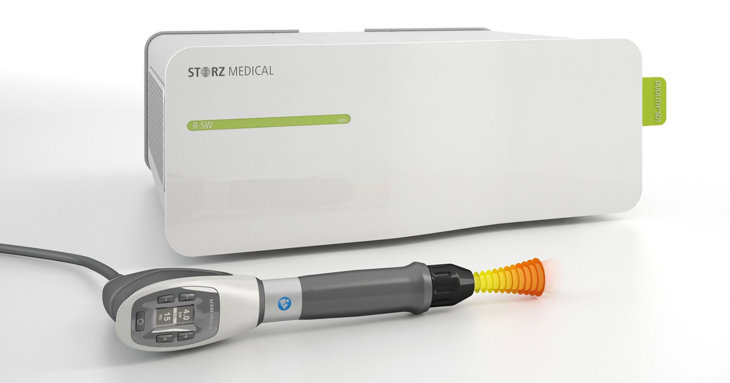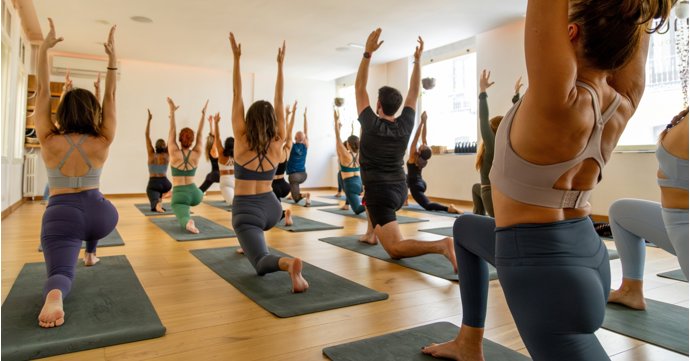If you're starting a new sport or setting yourself some big fitness goals in 2025, you might need to know what to do if that post-training soreness last a little longer than expected...
Whether you're a runner, lift weights or play golf, sports injuries are common and very treatable. Stephanie Smith-Rowles explains how her Cheltenham clinic, Pea Green Physio, can help with innovative Focused Shockwave Therapy treatment, hands-on therapies and bespoke rehabilitation programmes for sports injuries.
What are the most common sports injuries you see as a physiotherapist?
There are effectively three types of sports injuries:
- Strains and sprains: These affect joints, ligaments, tendons and muscles and can include ankle sprains, hip, shoulder or knee injuries, ligament tears and muscle strains.
- Bone stress fractures: These include conditions like shin splints (medial tibial stress syndrome) and stress fractures in the foot bones, tibia or fibular, femur or pubic symphysis, to name a few.
- Overuse or overtraining injuries: Injuries such as tendon micro tears resulting in tendinitis, like tennis or golfer's elbow, rotator cuff tendinopathies or Achilles tendinitis, are a few examples.
All of the above can occur when the body is not strong enough to cope with your training load or lacks enough rest, healing and recovery.
How do you know when to see a physiotherapist about a sports injury?
Delayed onset muscle soreness, or DOMS, is normal after exercise and can last one or two days — at most a week, especially if you're new to or progressing training.
If post-training soreness lasts longer, it may indicate that you are overtraining or it could be a repetitive strain injury; at this stage, we'd recommend booking a 20-minute 'Express Injury Assessment' with Pea Green Physio to get to the root of the problem.
Prices start from £45 and you'll get a mini assessment, diagnosis of the condition and advice on how
to
manage and treat it.
How do physiotherapists deal with sports injuries?
As physiotherapists, we play a key role in guiding patients through their healing journey, from the moment of injury to full recovery — to help them return to the sports and hobbies they love.
At Pea Green Physio, we have a team of physiotherapists with decades of experience in sports injuries and rehabilitation between us. (See Award-winning Cheltenham physio clinic expands with innovative tech for treatments for more information about the team's expertise.)

We offer tailored physiotherapy, state-of-the-art electrotherapy and rehabilitation services to accelerate your healing process.
Our physios place a huge emphasis on pre-habiliation and rehabilitation in the form of strength and conditioning, stretching and proprioception, with bespoke rehabilitation programmes, continued support, advice, education and encouragement.
You'll receive your own tailored 'progressive overload training' home exercise plan via the app Physitrack, which includes useful videos, audio and written descriptions to help you complete the assigned exercises and the ability to track your progress; we can also see how you're getting on and update your plans when you're ready to progress.
We also use thorough, hands-on techniques like deep tissue and sports massages, trigger point and active release techniques, specific soft tissue mobilisation, joint mobilisation and manipulation treatments; as well as strapping and taping to support your ligaments and joints whilst healing.
Where required, we can provide additional interventions including in-house ultrasound diagnostics for lower limbs by the clinic's expert in neurological and MSK physiotherapy, Wilson Mbutu.
The Pea Green Physio team also work closely with specialist orthopaedic surgeons and pain specialists in Cheltenham and will refer patients on for further investigation, where appropriate. We can also arrange referrals for MRI scans or MSK podiatrists for bespoke orthotic insoles, which may be recommended especially for lower limb injuries.
At the Cheltenham clinic, we can also use two types of Shockwave Therapy to speed up the healing process, reduce pain and really give those stubborn tendinopathies, stress fractures, joint and ligament strains a kick start in healing!
What's the difference between Focused and Radial Shockwave Therapy for sports injuries?
We use both types of Shockwave Therapy at Pea Green Physio, to treat different types of injuries.
Radial Shockwave Therapy is the most common type of shockwave therapy, used in most MSK clinics. Radial pressure waves have low energy density and slow impulse, making it useful for treating larger areas and more superficial injuries.
It's great for treating tendinopathies that are more than 12 weeks old and haven't responded to standard physiotherapy treatment — conditions like tennis elbow, rotator cuff issues, gluteal tendinopathy and plantar fasciitis, for example.
Radial kickstarts the healing process but must be combined with a 12-week rehabilitation programme of progressive overload training to be effective.
This treatment is available at both our Bicester and Cheltenham clinics.

Focused Shockwave Therapy, meanwhile, can penetrate much deeper into damaged tissue — up to 12cm — passing high energy density pressure waves into the affected area.
It’s very specific and targeted; if passed over normal tissue there's no pain, but once passed over damaged tissue, it can elicit your exact pain, which shows us that we are targeting the precise location of your injured tissue.
Focused Shockwave Therapy provides effective, immediate pain relief and fast healing by promoting new blood vessels, nerves, bone and collagen production — and can be used to treat acute or chronic tendinopathies, stress fractures, osteoarthritis and neuropathies.
We only offer Focused Shockwave Therapy at our Cheltenham clinic, currently — in fact, very few clinics in the UK currently offer this type of shockwave treatment, with Pea Green Physio being one of the only places in Cheltenham.

What is progressive overload training — and why is it recommended for rehabilitation?
Progressive overload is a scientifically proven method to help your body adapt and grow stronger by gradually increasing the demands placed on it.
By carefully increasing the intensity of exercise, tissues adapt and regenerate stronger than before, aiding recovery and reducing the risk of future injuries — making it an essential part of rehabilitation post-injury.
Plans are tailored to each patient's needs, with a focus on slow and controlled movements, gradually adding weights and increasing resistance and adjusting your repetitions and sets over time. You don’t have to have access to a gym to do this; your own body weight can be used to adjust difficulty. We can also provide resistance balls and bands and will ensure your home excercises fit into your lifestyle.
Rest
days are really important to prevent overtraining; to help tissues to regenerate, heal and remodel to become stronger for
the next time you place the same load upon your body. If you fail to have rest
days, this can lead to fatigue, stalled progress and put you at risk of injury.
What are your top tips for injury prevention and recovery?
Unfortunately, some injuries are just luck of the draw and we can’t always prevent every injury — however, incorporating regular strength, conditioning and mobility into your exercise routine is key to staying fit and strong; and can really help with injury prevention.
- Always warm up! Take five minutes to incorporate some sport-specific bodyweight exercises before taking part in any sort of sport or training. This could include dynamic stretching, core work, bounding or skipping to get yor muscles warm, heart rate up and your blood pumping around your body.
- Avoid static stretching before exercising — this can weaken your muscles. Instead, keep your static stretches for cool downs or rest days.
- Stay hydrated, wear appropriate sport-specific gear and use the right footwear for your sport.
- Prioritise your diet and nutrition — you can’t out-train a poor diet and this will hamper your recovery.
- If you’re starting a new sport, don’t go all in if your body isn’t prepared; gradually build up over a few weeks, to allow your body to adapt.
- Don’t forget those rest days! If complete rest isn't your thing, try 'active rest days' with lower impact activities like walking, cycling, swimming, yoga or pilates.




















